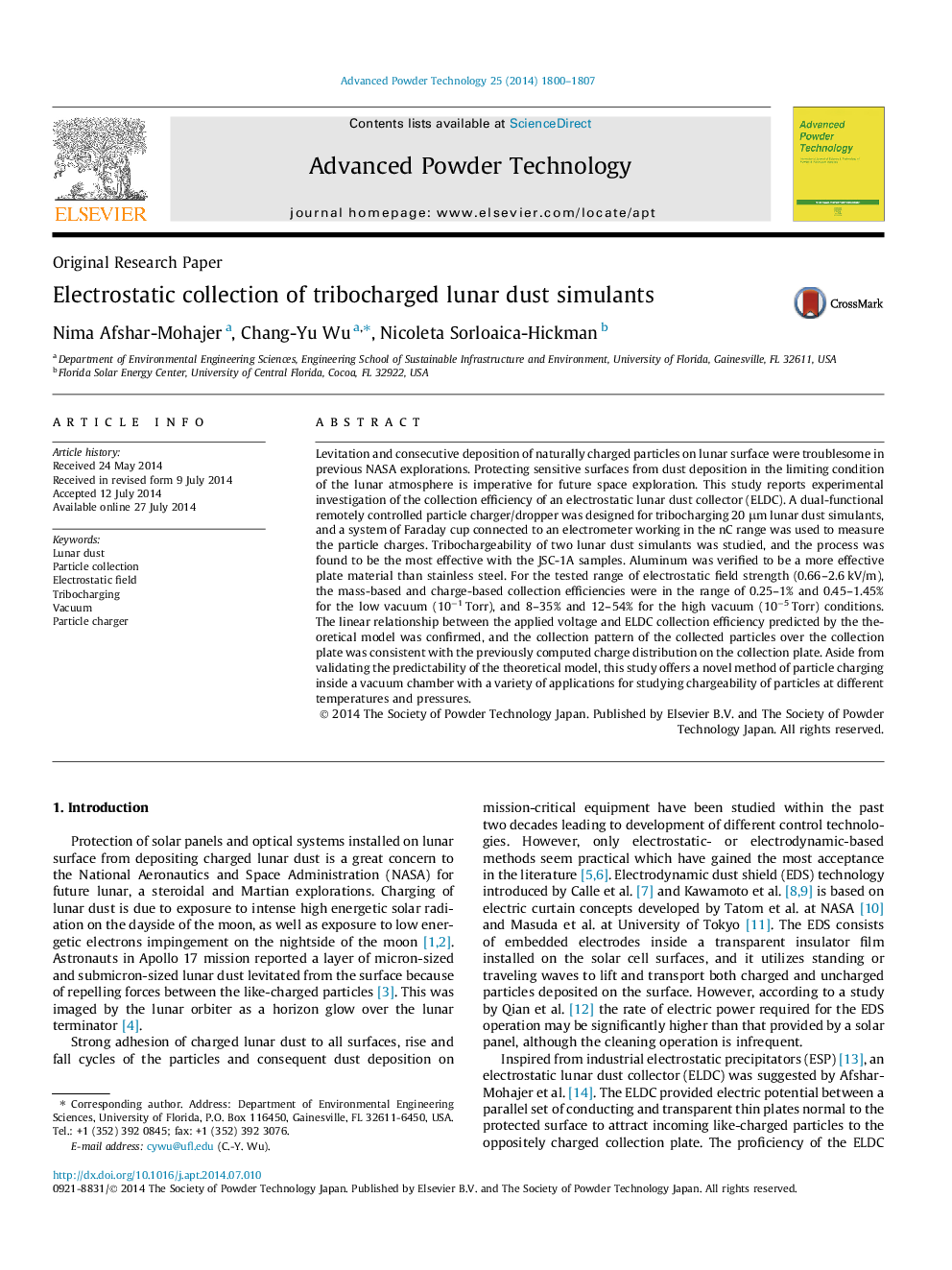| کد مقاله | کد نشریه | سال انتشار | مقاله انگلیسی | نسخه تمام متن |
|---|---|---|---|---|
| 144182 | 438923 | 2014 | 8 صفحه PDF | دانلود رایگان |
• JSC-1A lunar dust simulants had higher tribochargeability compared to the Chenobi simulants.
• Aluminum was more effective plate material than stainless steel for the collection plate.
• The mass- and charge-based collection efficiencies were 0.25–1% and 0.45–1.45% at 10−1 Torr.
• The mass- and charge-based collection efficiencies were 8–35% and 12–54% at 10−5 Torr.
Levitation and consecutive deposition of naturally charged particles on lunar surface were troublesome in previous NASA explorations. Protecting sensitive surfaces from dust deposition in the limiting condition of the lunar atmosphere is imperative for future space exploration. This study reports experimental investigation of the collection efficiency of an electrostatic lunar dust collector (ELDC). A dual-functional remotely controlled particle charger/dropper was designed for tribocharging 20 μm lunar dust simulants, and a system of Faraday cup connected to an electrometer working in the nC range was used to measure the particle charges. Tribochargeability of two lunar dust simulants was studied, and the process was found to be the most effective with the JSC-1A samples. Aluminum was verified to be a more effective plate material than stainless steel. For the tested range of electrostatic field strength (0.66–2.6 kV/m), the mass-based and charge-based collection efficiencies were in the range of 0.25–1% and 0.45–1.45% for the low vacuum (10−1 Torr), and 8–35% and 12–54% for the high vacuum (10−5 Torr) conditions. The linear relationship between the applied voltage and ELDC collection efficiency predicted by the theoretical model was confirmed, and the collection pattern of the collected particles over the collection plate was consistent with the previously computed charge distribution on the collection plate. Aside from validating the predictability of the theoretical model, this study offers a novel method of particle charging inside a vacuum chamber with a variety of applications for studying chargeability of particles at different temperatures and pressures.
Figure optionsDownload as PowerPoint slide
Journal: Advanced Powder Technology - Volume 25, Issue 6, November 2014, Pages 1800–1807
